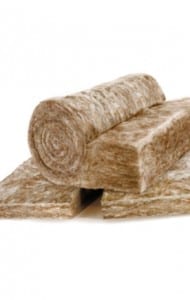
Home Insulation Through the Ages
From the Egyptians keeping their homes cool to the Greek invention of cavity walls and asbestos, or the trick in many colder climates of sealing gaps with mud, homes have been insulated for thousands of years.
Insulation techniques improved from the need in the Industrial Revolution to protect pipes in factories, relying heavily on asbestos until its toxic properties were recognised. In the past fifty years, concern with insulation has been increasingly driven by the need to limit energy waste and carbon emissions. Since 2006, the UK government has encouraged the building of zero-carbon homes.
Loft Insulation Materials
Ever since the development of modern-style pitched roofs, most homes have included either a loft or an attic. It’s been known for a long time that heat rises, so some kind of insulation technique was often used, though this might be no more than laying newspaper on the floor.
During recent decades, though, more efficient insulating materials have become common, such as glass or mineral fibre or synthetic insulation boards. The most usual approach is to pack material between the loft joists, with the option of then boarding them over.
Regulations on Installing Loft Insulation
The first regulations on home insulation issued by the UK government came in 1965. These were modest by today’s standards, specifying a mere 28mm of insulation for the loft. The requirements have been gradually increased, though, with each update of the regulations.
The current requirement for new builds and conversions is 250mm, though this doesn’t necessarily mean you should limit yourself to this. The optimum level of loft insulation is closer to 270mm, while other countries have higher expectations. In Sweden, for instance, three layers are used of 100mm each, with a layer of building paper between each.
The Advantages of Having Loft Insulation Installed
A house that’s insulated to government standards can not only be kept at a more even temperature, but it can save significantly on heating, reducing both your bills and your carbon footprint. While this includes other forms of insulation, the loft is the single most important target, and good loft insulation can save up to £250 a year.
If you need to know more about insulating your loft, feel free to get in touch with us for a chat.


